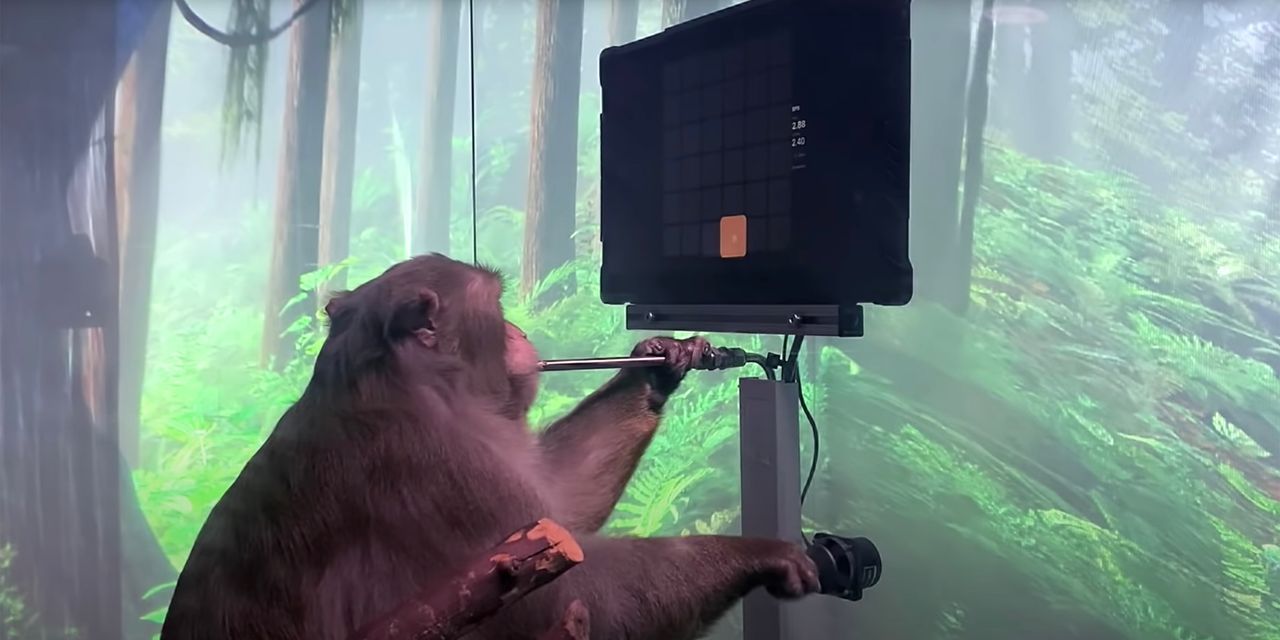
Is there some monkey business going on here?
Elon Musk’s neuroscience startup Neuralink has released a video that appears to show a primate playing Pong using only the power of its mind.
The roughly three-and-a-half minute video shows Pager, a 9-year-old macaque monkey who had two wireless neural recording and data transmission devices implanted in his brain about six weeks before the clip was filmed. Pager sips a banana smoothie through a metal straw while using a joystick to maneuver the Pong paddles on screen — but it turns out, that joystick isn’t plugged in. The lab claims in a blog post that Pager is actually moving the paddles using his brain activity via Neuralink implants.
Watch him here:
iframe { position: absolute; left: 0; top: 0; width: 100%; height: 100%; }
]]>
So how was this set up? Pager has been trained to play videogames using a joystick, and getting a banana smoothie as a reward. And at first, Neuralink’s wireless N1 Link devices recorded which neurons were firing while Pager operated the joystick. Neuralink created a mathematical model of the relationship between the pattern of Pager’s neural activity, and the different joystick movements that this brain activity was producing. Then, after the Links learned to predict Pager’s hand movements, the joystick was disconnected from the game. And while Pager continues moving the joystick out of habit, the Link devices in his brain are actually moving the cursor across the screen.
Hence, a monkey playing videogames with his mind — or as one commenter cracked, “Next video: Donkey Kong plays Donkey Kong,” referring to Nintendo’s iconic game featuring an oversized ape throwing barrels.
From the archives: Elon Musk’s Neuralink shows off brain-computer interface
The lab hopes to continue developing its brain implants so that one day the devices can help paralyzed people operate computers and mobile devices using their brain activity. Musk, the CEO of Tesla TSLA, -0.99%, shared that mission statement on Twitter TWTR, -0.04% on Thursday night, tweeting that the Neuralink devices could one day help someone with paralysis use a smartphone faster than a non-disabled person using their thumbs.
This builds upon previous “mind control” developments, such as a quadriplegic featured in the journal Science in 2015 who was able to drink a beer using a mind-controlled robotic arm. And in 2006, a paralyzed man named Matthew Nagle moved a cursor on a computer, and also controlled a TV set and a robot using just his thoughts via a small sensor implanted in his brain.
In February, Musk said that human trials at Neuralink could start as early as this year.



